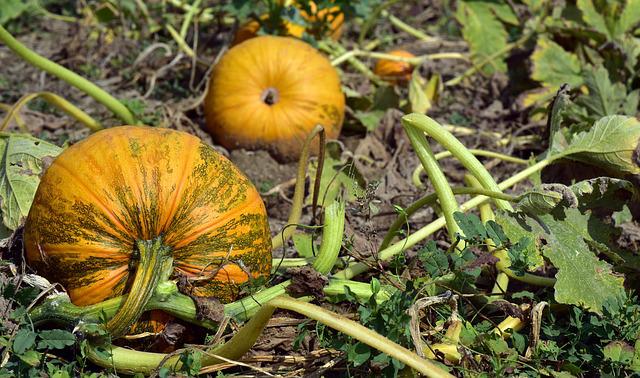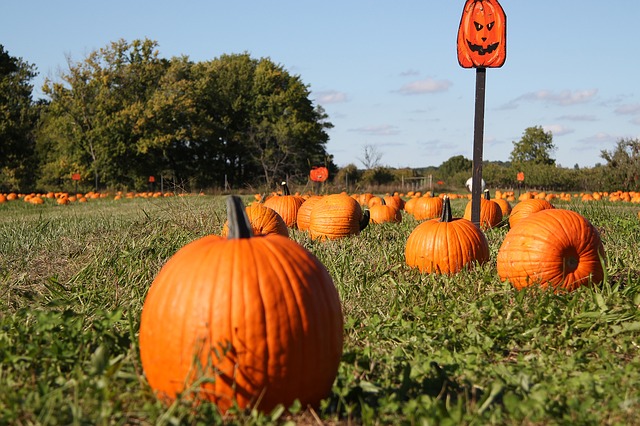Will Pumpkins Grow in Clay Soil?

Pumpkin plants will grow in clay soil, but they may do better if the clay is amended with organic matter such as compost or yard waste. In general, pumpkin plants prefer well-drained soil composed of plenty of sand, gravel, and decomposed materials. However, clay soil doesn’t necessarily have to be all red dirt – you can use any soil that drains well enough for your plant.
Table of Contents
What Sort of Soil Is Ideal for the Cultivation of Pumpkins?
Pumpkins require soil that is fertile, loamy, well-drained and has a neutral pH level. Pumpkins have a good chance of thriving in almost any soil, provided that it is not overly wet. Since they consume a lot of food, you will need to ensure that the soil is full of various nutrients to promote healthy growth. Add a few inches of compost or aged manure to the planting area before sowing seeds or planting transplants. This will increase the nutrients present in the soil.
Long-Term Planning on How to Cultivate Pumpkins in Clay-Based Soil
Before starting your pumpkin patch with seeds, you should think about how the soil can be improved.
Spread a large quantity of organic material that will break down in the ground over time. The nutrients in the soil are increased when manure is added. It aerates the soil to facilitate the development of healthy plants. In addition to this, you can plant worms in the soil around the garden rather than in the garden itself. Worms are responsible for breaking down and nourishing the layers of soil. Castings will be produced by the worms, which will feed on the organic material you have added to the soil. Worms are beneficial because they add a great deal of nutrients to the soil.
Gypsum and compost are two natural substances that can work to attract worms to your garden. It improves the texture of the soil and promotes insect growth. The gypsum separates the oil particles and moves them further apart. As a consequence of this, it offered improved drainage and increased water retention.
Planning for the Short Term
It is not a problem if you do not have the time to improve the soil structure. They will not be bothered by the soil as long as they are allowed to grow in planting rich and well-drained holes. Pumpkins are deep-rooted plants. Dig a hole in the ground between two and three feet wide and one foot deep. To fill in the hole, combine the soil above the hole, any compost that may be present, and additional soil.
Pumpkins are heavy feeders, and from the very beginning of the growing season, they will need a good mix of nutrients to grow from nutrition. This is because pumpkins get most of their energy from their carbohydrates. For each hole in the ground. Before adding it to the hole, combine the following components in a mixing bowl with the soil and manure described above:
- 1/2 cup blood meal
- 1 cup bone meal
- a third of a cup of greensand
- 1/4 cup of ash from hardwoods
- 1/3 cup kelp powder
- 2 tbsp pelleted sulfur
- 2 tbsp lime
It is a suggested list of changes that you can make to facilitate the extraordinary development of pumpkins. The first step is to place the pumpkin transplant in the center of the hole after partially filling it with the clay mixture. The next step is to create a moat around the plant and cover the roots with soil. This will help the plant retain water more effectively. When growing pumpkins in clay soil, you will need to be more careful about how much water you give them throughout the growing process. Pumpkins require approximately one inch of water each week on average.
Clay soil has many benefits, one of which is that it reduces the amount of water required to keep a garden from becoming soggy. However, pumpkins should not be grown in soil saturated with water because this will cause the roots to rot. Before providing any water, you should always check the soil by poking your finger into it to see if it is moist. To facilitate better water movement through plants’ soil, apply a layer of mulch.

Tips for Growing Pumpkin in Clay Soil
When growing pumpkins in clay soil, moisture is essential. Every week, pumpkins require around one inch of water. Clay soil drains much more slowly than other soil types.
One advantage of clay soil is that it may require less watering to keep the garden from becoming too damp. Waterlogged soil is harmful to pumpkins and encourages root rot.
Before watering, always put your finger into the soil to see if it’s damp. If the water drains too slowly, you may need to miss a watering or two. To increase drainage, spread a layer of mulch among the plants. Mulches will prevent natural clay soil compaction and enhance ventilation.
